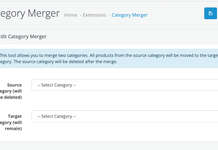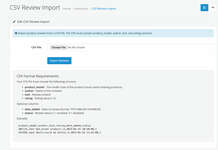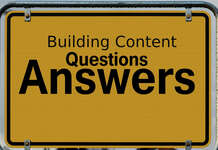Web hosting is about so much more than staking claim to a plot of digital land on which to house your website. It’s about creating a safe space for your online business but also for your customers. So don’t just leave it up to your host—take the time to implement these best practices to protect your website, your traffic, and your users.
Why Is Web Hosting Security Important?
Web hosting security protects your website from external threats. This isn’t just important for you (data integrity, business continuity, etc.), but it also plays a big part in user trust. Just one data leak and your trustworthiness is lost forever. Let’s look deeper:
1. Data Integrity
Websites store sensitive data, including things like personal information, financial details, and business data. Without strong security measures, this important info can be compromised. With this data in the hands of cyber criminals, users may be subject to identity theft, financial loss, and legal issues.
2. User Trust
Your visitors and customers trust that their interactions with your website are secure. A breach can shatter this trust, resulting in a damaged reputation and your loyal users flocking to competitors instead. Secure websites show users that their data is safe, building up confidence and encouraging engagement and purchases with no worry.
3. Business Continuity
Cyber attacks can cause downtime, disrupting your business operations, preventing sales, and leading to financial losses. By securing your site, you can minimize the risk of attacks that could take your site offline. Even if you can’t stop them, tough security can make them less effective and get you back up and running faster after an attack.
4. Regulatory Compliance
Many industries are subject to regulations that require the protection of sensitive data. Tight security not only helps your site comply with these regulations but also shows that you’re committed to protecting your customer’s sensitive info. Plus, if you aren’t compliant, you face legal penalties that could be monetary or worse—shutting down or blacklisting your business.
5. Protection Against Attacks
Web hosting security defends your website against various attacks, including malware, phishing, DDoS, and SQL injection. E-commerce websites, businesses, and customer trust take a LOT of time to put together… And inadequate security can flatten it all in a matter of minutes. It only takes one successful attack to ruin your business.
6. SEO Benefits
Search engines like Google prioritize secure websites when they rank pages. Websites with HTTPS are usually ranked higher than those without it, and that’s just basic security. So getting your security right doesn’t just mean you’ll be protecting your existing customers—it could help bring in new ones, too.
Common Threats Facing Websites Today
Websites today face a wide range of threats that can compromise their security and functionality. Here are some of the most common ones to be aware of:
- Malware: Includes ransomware and Trojans that steal data and disrupt operations.
- Phishing: Tricks users into giving out sensitive information via deceptive emails or websites.
- DDoS Attacks: Overload servers with traffic, causing downtime that seems to have no cause.
- Exploits: SQL injection and cross-site scripting (XSS) allow unauthorized data access.
- IoT Attacks: Target insecure IoT devices as entry points to networks.
Best Practices to Protect Your Website
Implement SSL/TLS Certificates
SSL/TLS certificates encrypt data when it’s traveling between your server and users’ servers. This means that even if the info is intercepted by someone with malicious intent, it’s unlikely to be usable.
Regular Software Updates and Patch Management
Regularly update your software, including operating systems, CMS, plugins, and themes. Updates often include security patches that fix vulnerabilities before they can be exploited by attackers. Wherever possible, enable automatic updates so your business and users stay safe even if you’re a touch late to notice an update.
Strong Authentication Mechanisms
Implement Two-Factor Authentication (2FA)
Two-factor authentication adds a second layer of security by asking for a verification code in addition to the password. This code can be sent to a mobile device or generated by an authentication app, so unauthorized access becomes virtually impossible.
Use Strong, Unique Passwords
Make sure that all passwords are complex and unique, using a mix of letters, numbers, and symbols. One of the biggest mistakes is reusing passwords across multiple accounts. Strong, unique passwords are a surprisingly effective way of protecting sensitive information and preventing access that shouldn’t happen.
Periodically Change Passwords
Regularly changing passwords might seem like an annoyance, but it makes a huge difference in reducing the risk of compromised credentials. Changing passwords often means that even if a password is stolen, it won’t be usable for long.
Firewall and Access Controls
Install and Set Up a Web Application Firewall
A web application firewall (WAF) helps protect your website by filtering and monitoring HTTP traffic between web apps and the Internet. A properly configured WAF can block common threats and malicious requests, adding a layer of security.
Configure IP Whitelisting/Blacklisting
IP whitelisting allows access only from trusted IP addresses while blacklisting blocks known malicious IP addresses. This helps control who can access your website and improves security. By regularly updating your whitelist and blacklist, you can adapt to new threats and make sure that only authorized users can access your site.
Use SSH Keys for Secure Server Access
SSH keys give you a more secure way of logging into a server with SSH than just using a password alone. They use cryptographic keys, which are much harder to crack than passwords. Only authorized users with the correct key can access your server.
Data Backup and Recovery Plans
Backing your website data up often means if there’s a problem, you’re in a better position to quickly restore your data and continue operating with little interruption. It’s a good idea to store backups in an off-site location that’s secure against cyber attacks, physical damage, and theft. Automating the backup process is also good practice.
Regular Security Audits and Vulnerability Scanning
Conduct Regular Security Audits
Regular security audits help identify and fix vulnerabilities. These audits should cover all aspects of your website’s security, including server configuration, software updates, and user access controls. This helps you stay ahead of potential threats.
Scan Website Files for Malware
Regularly scanning your website files for malware helps detect and remove malicious software before it can cause chaos. Use automated tools to perform these scans and keep your site clean.
Website Encryption
Encrypt Data Stored on Servers
Encrypting data stored on your servers means that even if the data is accessed without authorization, it can’t be read without the encryption key. It’s an easy and useful way of adding an extra layer of security to your data.
Use Secure Communication Protocols
Using secure communication protocols like HTTPS and TLS or end-to-end encryption keeps data safe when it’s moving between your site and other places. Secure protocols prevent data from being read or tampered with during transmission.
Securely Managing User Permissions
Apply the Principle of Least Privilege
Only give users the permissions they need to perform their tasks. By restricting access, you lower the risk of unauthorized actions and make sure that users can’t perform actions beyond the essentials of their role. Regularly review and revoke permissions where necessary.
Implement Separation of Duties and Access Controls
Separate duties among different users and implement strict access controls. By dividing responsibilities, you make sure that no single user has excessive control, which helps prevent fraud and unauthorized access.
DDoS Protection
Utilize DDoS Mitigation Services
DDoS mitigation services can detect and block malicious traffic, helping protect your website from Distributed Denial of Service attacks. These services analyze incoming traffic and filter out harmful requests, keeping your site a whole lot safer from this kind of attack, which can be devastating to a business.
Implement Rate Limiting and Traffic Filtering
Rate limiting controls the number of requests a user can make to your server. Traffic filtering blocks strange or malicious requests. By implementing these, you can reduce the impact of potential attacks and maintain the performance of your website.
Secure File Transfers
Use SFTP or FTPS Instead of FTP
SFTP and FTPS protect data in transit. These protocols use encryption to secure data on files being transferred from your site to somewhere else so they can’t be tampered with.
Ensure Secure File Uploads
Implement security measures to verify and sanitize files uploaded to your website, so nothing malicious ends up finding its way into your backend. By scanning and validating uploaded files, you can block harmful content.
Implement File Integrity Monitoring
File integrity monitoring helps detect unauthorized changes to your files, alerting you to potential security breaches. By regularly checking the integrity of your files, you can identify and respond to strange modifications quickly.
Monitoring and Logging
Continuously Monitor Security
Continuous security monitoring helps detect and respond to threats in real-time. By using monitoring tools, you can track activities and identify potential issues as they arise, allowing for quick intervention before anything can take hold and cause havoc.
Set Up Logging for Security Events
Logging security events allows you to track and analyze suspicious activity on your website so you can identify and respond to potential threats ASAP. Keep detailed logs of all security-related events and review them regularly to spot patterns that may indicate security breaches.
Add Website Security Extensions
Website security extensions provide an extra layer of protection against various online threats. They can also offer features such as ad blocking, script blocking, and cookie management to improve user privacy.
What Security Features to Look for in Web Hosting Providers
- Software Security: Make sure the web hosting provider uses updated software and applies regular security patches to protect against vulnerabilities.
- SSL Certificate: Look for hosting providers that offer SSL certificates to encrypt data transferred between your website and its users.
- Backups and Restorations: The best web hosting providers offer regular backups and easy restoration options to quickly recover from data loss or breaches.
- DDoS Protection: Select a hosting service with built-in DDoS protection to safeguard against Distributed Denial of Service attacks.
- Network Monitoring: Opt for providers that offer continuous network monitoring to detect and respond to suspicious activities promptly.
- CDN Support: Make sure the provider supports Content Delivery Networks (CDNs) to improve security and website performance by distributing content across multiple servers.
Conclusion
Choosing the best web hosting provider is about much more than just performance. It’s also about security because an unsecured site is a fast track to losing customers and crashing a business. But don’t leave it all to your web host, either—do what you can to make sure your site is as safe as it comes. After all, your livelihood and your reputation are on the line.






